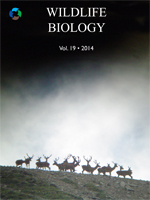The populations of Alpine chamois Rupicapra rupicapra rupicapra are currently not at risk of extinction, but local population declines have been observed in some areas. Competition with other herbivore species may be one of the causes for this decline. The present research aims at describing the autumnal diet and preferences of Alpine chamois living in sympatry with red deer Cervus elaphus and roe deer Capreolus capreolus in central Italian Alps and to verify the presence of spatial and diet overlap among these herbivore species. We analyzed the rumen content of 35 samples collected during the hunting season from animals culled in Val Fontana. The results were integrated by data previously collected on rumen content of red deer and roe deer and on space use of the three herbivore species in the same study area. We identified 26 species and 15 genera belonging to 21 plant families of the 51 available in the study area. Monocotyledon families were the most frequently represented in chamois diet composition (78.11%), followed by Ericaceae (5.30%), Betulaceae (4.32%) and Cupressaceae (3.37%). All results showed similar diet between genders. Chamois diet was more similar to red deer than to roe deer diet. The diet selection index (W) showed that on the east-facing side of the valley some species (Calluna vulgaris: Wm = 5.27; Juniperus communis: Wm = 4.24; Loiseleuria procumbens: Wm = 4.82) were selected above their availability, perhaps as a consequence of the higher spatial overlap on this side between chamois and red deer, which make similar use of vegetal resources. Although competition among species is unlikely, due to the low population densities, over-exploitation of food resources and food niche overlap may be future limiting factors for local chamois population, and they should be taken into account for the proper management and control of wild and domestic ruminants.
How to translate text using browser tools
1 May 2016
Feeding ecology of alpine chamois living in sympatry with other ruminant species
Elena Andreoli,
Cristina Roncoroni,
Fausto Gusmeroli,
Giampaolo Della Marianna,
Gianluca Giacometti,
Marta Heroldová,
Sara Barbieri,
Silvana Mattiello





